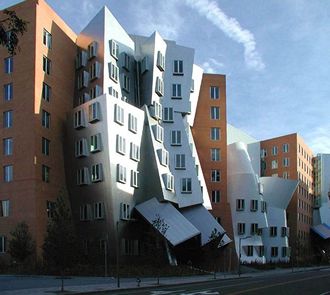 An extensive study by the University Autonomy de Barcelona (UAB) sampled 5,538 secondary school students to gauge the effect of technology in their lives.
An extensive study by the University Autonomy de Barcelona (UAB) sampled 5,538 secondary school students to gauge the effect of technology in their lives.
 An extensive study by the University Autonomy de Barcelona (UAB) sampled 5,538 secondary school students to gauge the effect of technology in their lives.
An extensive study by the University Autonomy de Barcelona (UAB) sampled 5,538 secondary school students to gauge the effect of technology in their lives.
 Scientists at the universities of Cambridge, Southampton and Surrey believe they’ve cracked a glass problem that has eluded researchers for decades.
Scientists at the universities of Cambridge, Southampton and Surrey believe they’ve cracked a glass problem that has eluded researchers for decades.
They say they have made a breakthrough using amorphous chalcogenides, used in CDs and DVDs, that will allow the creation of all optical computer systems.
Dr Richard Curry, project leader of the team, said: “The challenge is to find a single material that can effectively use and control light to carry information around a computer. Much how the web uses light to deliver information, we want to use light to both deliver and process computer data.”
He said the team shows how a widely used glass can conduct negative electrons as well as positive charges, meaning that pn-junction devices can be made.
The team thinks that its research will be integrated into computers within a mere 10 years. But the glass is already being manufactured and used for a memory technology called CRAM.
 Scientists at the Hebrew University of Jerusalem claim to have made a breakthrough that may well lead to the development of computer circuits based on DNA.
Scientists at the Hebrew University of Jerusalem claim to have made a breakthrough that may well lead to the development of computer circuits based on DNA.
Physics is preventing the development of silicon based CMOS technology in the future but molecular electronics have been touted as the way forward.
Now a group led by Professor Danny Porath and Professor Paul Schankerman clailm to have performed reproducible and quantitive measurements of electricity through long molecules made of four DNA strands.
Porath said that the research “paves the way for implementing DNA based programmable circuits for molecular electronics, a new generation of computer circuits that can be more sophisticated, cheaper and simpler to make.”
The announcement comes through a collaboration with other bodies such as Tel Aviv University and groups based in Denmark, Spain, the USA, Italy and Cyprus.
 Microprocessors using superconducting circuits can be 50 to 100 times more energy efficient and faster than Intel chips but obstacles have prevented the dream being realised. Yet.
Microprocessors using superconducting circuits can be 50 to 100 times more energy efficient and faster than Intel chips but obstacles have prevented the dream being realised. Yet.
Now MIT researchers claim to have developed a circuit design that will make superconducting devices cheaper to manufacture using so-called Josephson junctions. MIT said chips using these junctions clock at 770GHz – that’s pretty fast, folks.
Adam McCaughan and Professor Karl Berggren have dubbed their circuit the nanocryotron.
McCaughan said that the world has seen devices come and go without real world applications. “We have already applied our device to applications that will be highly relevant to future work in superconducting computing and quantum communications,” he claimed.
The cool thing about superconductors is they don’t have any electrical resistance. When electrons trundle along copper wires or circuits in regular chips, they tend to keep bumping against atoms and that generates energy, that is to say heat.
The good Professor’s lab uses superconducting circuits made from niobium nitride, operating at the rather chilly temperature of minus 257 degrees Celsius. The scientists are experimenting with liquid helium. “Superconducting computation would let data centres dispense with the cooling systems they currently use to keep their banks of servers from overheating.”
 Scientists at the University of Southern Denmark (SDU) say they have developed a method that uses the power of computers to find new compounds to fight the AIDS virus.
Scientists at the University of Southern Denmark (SDU) say they have developed a method that uses the power of computers to find new compounds to fight the AIDS virus.
The problem is that drugs that have managed to kill HIV are becoming ineffective because the virus is becoming resistant to them.
The researchers say they have a method to speed up development work in the search for new compounds to fight HIV. They claim that can increase speed by an order of several hundred percent.
The new mthods use quantum mechanics and molecular mechanics using significantly more powerful computers to hunt for the “needle in the haystack”.
Vasanthanathan Poongavanam and Jacob Kongsted at SDU screened half a million compounds and narrowed down 25 for further investigation. Of those, 14 inhibit the HIV virus’s ability to reproduce.
* The image illustrates HIV virus – purple balls – entering a host cell. Once they’ve entered they deliver viral RNA – the purple capsule. The container carries enzymes needed for viral self replication and the compounds discovered are used to inhibit the enzymes.
 A UK executive at Intel once pointed out to me that a billion of anything is a lot of something.
A UK executive at Intel once pointed out to me that a billion of anything is a lot of something.
And Intel released its third quarter results late yesterday evening, turning in a net profit of $2.95 billion, down from the same quarter last year of $2.97 billion. The Q3 net profit is based on sales of $13.48 billion but turned in a gross profit margin of 62.4 percent.
Intel expects the fourth quarter to be flat, but claimed at an analyst conference after its results were released that there are signs of an uptick in the X86 market.
Its customers, including giants like Dell, HP and Acer, and industry analysts such as Gartner and IDC may beg to differ that the PC market is recovering.
Meanwhile the chip behemoth admitted that sales to consumers continued to be sluggish. Right now the firm’s strength seems to be in the server market, where margins are high.
Brian Krzanich, Intel’s CEO, needs to do something to address the company’s so far woeful performance in tablets and smartphones. Most handset makers use chips based on ARM technology which are far cheaper than Intel processors.
While Intel has been a leader in process technology, it is having trouble getting the right yields on 14 nanometre technology – and it admitted as much last night.